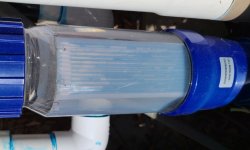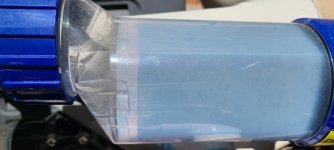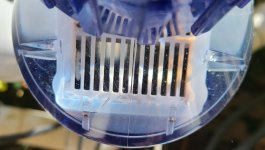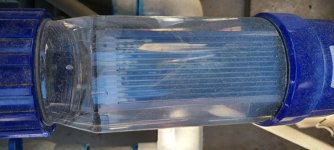- Jun 5, 2020
- 152
- Pool Size
- 18000
- Surface
- Plaster
- Chlorine
- Salt Water Generator
- SWG Type
- CircuPool RJ-60 Plus
I've noticed what I think is scaling starting to accumulate in my SWG (please let me know if it's not scaling  ). I've attached a couple of photos. Does this seem like a little, a lot, or in between? My TA has drifted up over the last few months, so I'm starting to work on bringing it back down. My CH is at the low end, and my CSI would just be above 0 at a pH of 8 at the low winter temps, but that is changing as the water warms.
). I've attached a couple of photos. Does this seem like a little, a lot, or in between? My TA has drifted up over the last few months, so I'm starting to work on bringing it back down. My CH is at the low end, and my CSI would just be above 0 at a pH of 8 at the low winter temps, but that is changing as the water warms.
When a SWG starts to get too much scaling does its output gradually decline or drop off a cliff?
I'd appreciate any thoughts or suggestions!
Thanks, Eric
When a SWG starts to get too much scaling does its output gradually decline or drop off a cliff?
I'd appreciate any thoughts or suggestions!
Thanks, Eric





